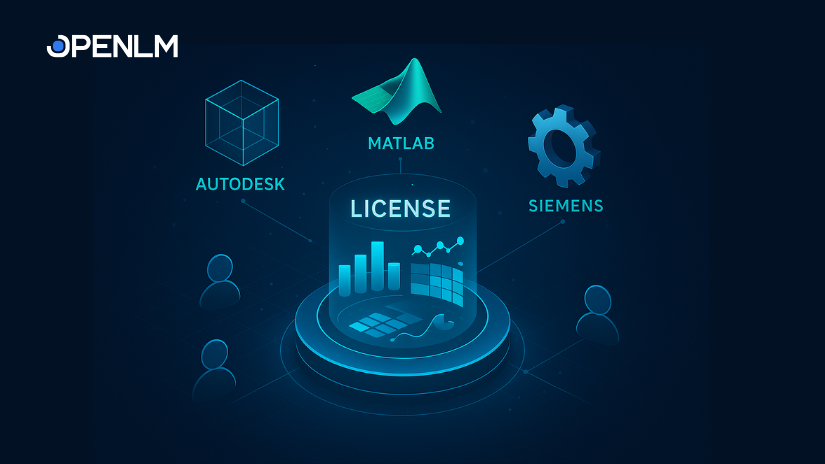Watch Video: how to customize your OpenLM deployment via GPO
Overview
1. Creating a transform file with Orca
Orca is a tool that allows you to edit an MSI file’s properties. With it, you can easily add customized text, add/remove installation screens, add/change/remove public properties, or even change certain conditions contained with the original MSI file.
You can download a copy of Orca from: http://www.technipages.com/download-orca-msi-editor.html
In order to create your custom Windows installer setup transform file (.mst) containing your custom OpenLM parameters, using Orca, following steps must be performed:
-
Open Orca.
-
Open OpenLM MSI package. File > Open > Browse to the MSI > Click Open.
-
Start a new transform. Click on the top “Transform” menu, and select “New Transform”.
-
Make changes. Navigate to Property table to add public properties containing your custom values. To add a new property, click on the top “Tables” menu, and select “New Row” or right click mouse on right pane and select “Add row”.
-
Generate the transform file. Click on the top “Transform” menu, and select “Generate Transform”.
-
Save the transform file. Enter in a name for the transform file, and click “Save”.
- Open the MSI package
- Create a new transform
- Add a new property
- Edit property
- Some OpenLM custom properties
- Save the transform
You should now have a transform file (.mst) that contains the modifications to the original MSI. Keep in mind that the original MSI has NOT been modified. You will have to apply the transform to the original MSI to have the changes take place.
From Version 1.6.0 onwards, following public properties are available to personalize your OpenLM installation:
SERVERNAME: OpenLM server name.
SERVERPORT: OpenLM server port number – default: 7012
SHOW_NOTIFICATION_ICON (true/false): Show /Hides OpenLM Agent notification icon at the taskbar – default: true
ERROR_LEVEL (ALL/DEBUG/INFO/WARN/ERROR/FATAL/OFF): OpenLMerror level options – default: ERROR
TARGETDIR: specify the root destination directory for the installation. – default: (“%ProgramFiles%OpenLMOpenLM Agent”
SHUT_WHEN_NOT_ACTIVE (true/false): Shutdown the Active Agent automatically when an application is monitored as inactive for a certain period of time (by INACTIVITY_TIME) – default: false
INACTIVITY_TIME(seconds): Inactivity time in seconds. Meaningful only when SHUT_WHEN_NOT_ACTIVE = true
LANG: Choose the OpenLM language and direction. Possible values: ”en-US”(English) ”ru-RU”(Russian) ”es-ES”(Spanish) ”de-DE”(German) ”fr-FR”(French) ”zh-CHS”(Chinese) “pr-PR”(Portuguese) – default: “en-US”
INSTALLING EXTENSIONS (ONLY FOR THE OPENLM ACTIVE AGENT): The OpenLM Extension is a software module that enables OpenLM to provide dedicated services to specific software applications(Please consult the OpenLM support page for information on supported applications).
OpenLM is capable of retrieving licenses from idle applications in either one of two methods: “Suspend and Resume” or “Save and Close”. The “Save and Close” method is only applicable for supported applications, and if the OpenLM Agent extension was installed as part of the OpenLM Agent installation.
For more information about the license retrieval in these methods please refer to this Application Note.
INSTALL_ARCGIS(1/0): Install/Do NOT install the ArcGIS extension.
INSTALL_AUTOCAD(1): Install/Do NOT install the AutoCAD extension.
INSTALL_MATLAB(1): Install/ Do NOT install the Matlab extension.
INSTALL_PLUGIN(1/0): This install/ Do NOT install plugin that enables selecting the ArcGIS license level to ArcInfo/ ArcEditor/ ArcView. This plugin is relevant only for ArcGIS users.
To test the transform, in cmd window, type:
msiexec /i <your_msi_file_here.msi> TRANSFORMS=<your_mst_file_here.mst>
2. Methods of deployment
Group Policy supports two methods of deploying a MSI package:
Assign software – A program can be assigned per-user or per-machine. If its assigned per-user, it will be installed when the user logs on. However, if its assigned per-machine then the program will be installed for all users when the machine starts.
Publish software – A program can be published for one or more users. This program will be added to the Add or Remove Programs list and the user will be able to install it from there.
3. Create a distribution point
The first step in deploying a MSI through GPO is to create a distribution point on the publishing server. This can be done by following these steps:
-
log on to the server as an Administrator user
-
create a shared network folder (this folder will contain the MSI package)
-
set permissions on this folder in order to allow access to the distribution package
-
copy the MSI in the shared folder
4. Create a Group Policy Object
A MSI package is deployed (distributed) through GPO as a Group Policy Object. In order to create an object for your package, you can follow these steps:
-
click on the Start button, go to Programs, select Administrative Tools and then select Active Directory Users and Computers
-
right-click your domain name in the console tree and select the Properties context menu
-
select the Group Policy tab and click New
-
set the name of the policy (for example MyApplication)
-
click Properties and select the Security tab
-
check the Apply Group Policy checkbox only for the groups to which the policy will be applied
-
click on the OK button
5. Assign a MSI package
A package can be assigned per-user or per-machine. Also, if the package is assigned, it will automatically be installed silently. In order to assign a package you can follow these steps:
-
click on the Start button, go to Programs, select Administrative Tools and then select Active Directory Users and Computers
-
right-click your domain name in the console tree and select the Properties context menu
-
go to the Group Policy tab, select the object you want and click Edit
-
expand Software Settings under Computer Configuration
-
right-click Software Installation, select the New context menu and then click on Package
-
in the Open dialog type the full UNC path of the shared package you want to assign
-
click on the Open button
-
click on Assigned and then click OK (the package will be added to the right pane of the “Group Policy” window)
-
close the Group Policy snap-in, click OK and exit the Active Directory Users and Computers snap-in
-
when the client computers start, the assigned package will be installed automatically
- Add a new package to software
- Installation object
- Choose the MSI package from the distribution point
- Choose advanced deployment method
- On the ‘Modifications’ tab add the personalized transform file
6. Redeploy a MSI package
Sometimes you may need to redeploy a package (for example when doing an upgrade). For redeploying a package you can follow these steps:
-
click on the Start button, go to Programs, select Administrative Tools and then select Active Directory Users and Computers
-
right-click your domain name in the console tree and select the Properties context menu
-
go to the Group Policy tab, select the object you used to deploy the package and click Edit
-
expand the Software Settings element (per-user or per-machine) which contains the deployed package
-
expand the Software Installation element which contains the deployed package
-
right-click the package in the right pane of the Group Policy window
-
select the All Tasks menu and click Redeploy application
-
click the Yes button for reinstalling the application wherever it is installed
-
close the Group Policy snap-in, click OK and exit the Active Directory Users and Computers snap-in
7. Remove a MSI package
Group Policy also allows you to remove packages which have been deployed in the past. Here are the steps for removing a package:
-
click on the Start button, go to Programs, select Administrative Tools and then select Active Directory Users and Computers
-
right-click your domain name in the console tree and select the Properties context menu
-
go to the Group Policy tab, select the object you used to deploy the package and click Edit
-
expand the Software Settings element (per-user or per-machine) which contains the deployed package
-
expand the Software Installation element which contains the deployed package
-
right-click the package in the right pane of the Group Policy window
-
select the All Tasks menu and click Remove
-
select from the following options:
-
Immediately uninstall the software from users and computers
-
Allow users to continue to use the software but prevent new installations
-
-
click the OK button to continue
-
close the Group Policy snap-in, click OK and exit the Active Directory Users and Computers snap-in.
* This information is given as a service.





